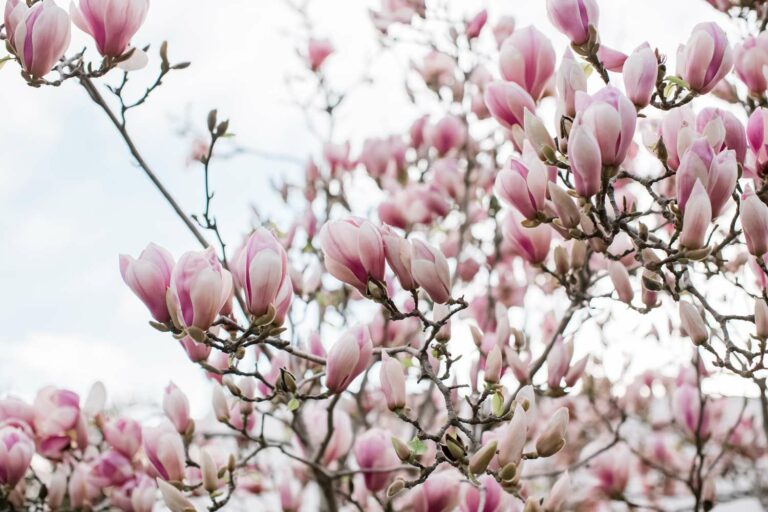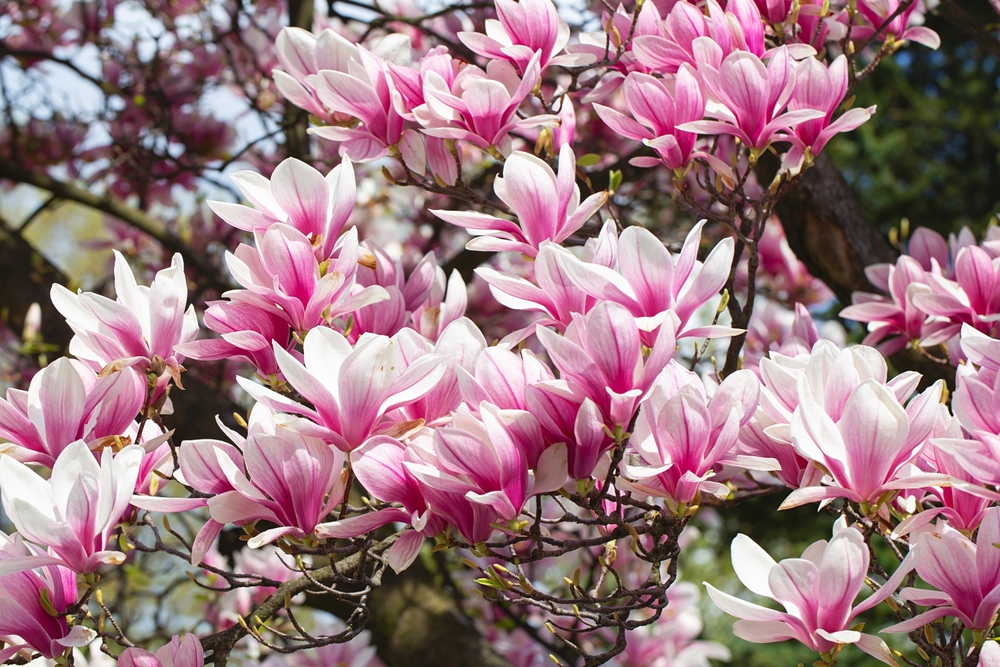Meaning
Botanical Symbolism
Magnolia, a name both elegant and evocative, carries within it a rich tapestry of meaning, steeped in botanical symbolism and historical significance.
Botanically, magnolias belong to the Magnoliaceae family, ancient flowering trees that predate bees. Their large, fragrant blooms, often adorned with prominent petals, symbolize enduring love, dignity, and nobility. The magnolia’s prehistoric existence links it to concepts of timelessness, resilience, and a primal connection to nature.
The name “Magnolia” itself originates from the French botanist Pierre Magnol (1638-1715), who was renowned for his work on plant classification. His meticulous studies laid the groundwork for modern taxonomy, solidifying his place in botanical history. It is fitting, therefore, that a tree as significant and enduring as the magnolia bears his name.
In various cultures, magnolias hold diverse symbolic meanings. In China, they are associated with femininity, purity, and prosperity, often featured in traditional artwork and poetry. In Japan, they embody perseverance and strength, their delicate blossoms representing the ability to bloom even in challenging environments.
Across many Western societies, magnolias have come to symbolize enduring love and commitment. Their stately presence and long-lasting blooms make them popular choices for wedding bouquets and anniversary gifts, signifying a bond that transcends time.
The name Magnolia, therefore, embodies more than just a botanical designation. It whispers tales of ancient forests, celebrates the dedication of pioneering botanists, and evokes a sense of enduring beauty and resilience.
Personal Associations
- Magnolia, a name steeped in history and symbolism, carries a rich tapestry of meanings and personal associations.
- The name’s botanical origins lend it an aura of natural beauty and elegance.
- Derived from the Latin word “magnolia,” it pays homage to the magnificent magnolia trees, renowned for their large, showy flowers that bloom in shades of white, pink, and yellow.
- Historically, the Magnolia genus is believed to have originated in Asia, with species found predominantly in China, Japan, and the southern United States.
- These resilient trees have long been admired for their resilience and ability to thrive in diverse climates.
Symbolism of Beauty and Grace
The magnolia flower, with its exquisite petals and captivating fragrance, has often been associated with beauty, grace, and dignity.
Southern Charm and Tradition
In the Southern United States, magnolias hold a special place in cultural heritage, symbolizing hospitality, tradition, and enduring elegance.
Resilience and Strength
The magnolia tree’s ability to withstand harsh weather conditions and bloom profusely despite adversity has earned it symbolic associations with resilience, strength, and perseverance.
Beyond its botanical origins and symbolism, the name Magnolia carries a wealth of personal associations that vary across individuals and cultures.
For some, it evokes memories of childhood summers spent beneath the shade of magnolia trees, their fragrance filling the air with sweet nostalgia.
Others may associate the name with loved ones, places, or special occasions that have left lasting impressions.
The enduring popularity of the name Magnolia reflects its timeless appeal and the multifaceted meanings it embodies.
Origin
Ancient Greek Roots
- Magnolia is a popular given name for girls as well as a surname.
- Its origin lies in the beautiful magnolia flower, known botanically as Magnolia grandiflora.
- The magnolia tree is native to North America and has been cultivated for centuries.
- This name became associated with elegance, grace, and southern charm.
- While its direct connection to a Greek root word isn’t clear, the name Magnolia likely entered the English language through French.
- The French botanist, Pierre Magnol, played a crucial role in classifying plants in the 17th century.
- He gave the name “Magnolia” to this genus of trees in honor of his friend and fellow scholar, John Magnolia.
- Interestingly, while not directly from ancient Greek roots, the word magnolia itself might have an indirect connection to a proto-Indo-European language.
- The root “magh-” meant “great” or “large,” which could be linked to the impressive size and grandeur of magnolia blossoms.
- The name Magnolia has gained worldwide popularity in recent times, symbolizing beauty, resilience, and a touch of Southern allure.
Spread Through Exploration
The name Magnolia is derived from the genus of flowering trees known as magnolias.
These majestic trees are native to North America, East Asia, and Central America, renowned for their large, showy flowers that often bloom in the spring.
The genus was first named by French botanist Pierre Magnol (1638-1715).
Magnol was a prominent figure in botany during the early modern era, known for his extensive work on classifying plants and establishing botanical gardens.
In honor of his contributions to the field, the genus Magnolia was named after him.
The name Magnolia, thanks to its connection with the beautiful and elegant flowering trees, gained popularity as a given name during the late 18th century.
It resonated with people who appreciated the symbolism of beauty, grace, and resilience represented by these remarkable plants.
The spread of the name Magnolia was further facilitated by exploration and trade in the 19th and 20th centuries.
As European explorers ventured into new territories and discovered new species, including magnolias, the name traveled across continents, becoming increasingly familiar in various cultures.
This global exchange of ideas and knowledge contributed to the widespread adoption of Magnolia as a cherished and enduring name.
History
Early Cultivation and Trade
The Magnolia genus, encompassing over 200 species of evergreen and deciduous trees and shrubs, holds a special place in horticultural and botanical history.
Named after French botanist Pierre Magnol, the magnolia’s story intertwines with early exploration, trade routes, and evolving understanding of the plant kingdom.
The genus Magnolia originated in Asia, particularly China and Japan, where they have thrived for millennia. Ancient Chinese texts mention magnolias, suggesting their use in medicinal practices and as symbols of beauty and nobility.
During the Age of Exploration, European explorers encountered magnolias in their travels to Asia.
These exotic plants captured the imagination of European botanists and horticulturists, who sought to cultivate them in gardens and arboretums across Europe.
The arrival of Magnolia grandiflora, the southern magnolia, in Europe around the 17th century marked a turning point. This species, native to southeastern North America, quickly gained popularity for its grandeur and elegant white blossoms.
Cultivation of magnolias spread throughout Europe, particularly in France, where Pierre Magnol’s influential work on plant classification further solidified their place in botanical discourse.
The establishment of trade routes between Asia and Europe facilitated the exchange of magnolia seeds and plants. Botanical gardens became important centers for research, propagation, and dissemination of these exotic species.
Over time, horticulturists developed new cultivars of magnolias, prized for their unique colors, fragrances, and growth habits. The name Magnolia came to embody a sense of elegance, sophistication, and enduring beauty in the world of horticulture.
Magnolia in Art and Literature
Magnolia, with its delicate blooms and evergreen allure, holds a rich history intertwined with nature, art, literature, and human fascination. The name itself traces back to the renowned botanist Pierre Magnol (1638-1715), who was instrumental in establishing the systematic classification of plants.
Born in France, Magnol revolutionized botanical study during his lifetime, becoming the director of the Botanical Garden in Montpellier. His meticulous research and organization led him to propose a new system for classifying plants based on their characteristics. This groundbreaking work earned him recognition as a pioneer in botany and ultimately resulted in his name being bestowed upon this iconic flower genus.
The magnolia, native to North America and Asia, has captivated artists and writers for centuries. Its large, fragrant blossoms evoke a sense of beauty and serenity, making it a popular subject in both traditional and modern art forms.
In early American landscape painting, magnolias often symbolized the abundance and prosperity of the burgeoning nation. Their presence in portraits and still lifes reflected the growing fascination with nature and its aesthetic appeal.
Literature has also embraced the magnolia as a symbol of Southern charm, resilience, and even mystery. In Mark Twain’s “The Adventures of Huckleberry Finn,” the magnolia tree serves as a reminder of Huck’s longing for a simpler time and place.
In contemporary literature, magnolia imagery often explores themes of memory, loss, and the enduring power of nature. Its delicate beauty juxtaposed with its robust strength resonates with readers on an emotional level.
- Best LeadsGorilla Alternatives for 2025 - April 26, 2025
- Best Overloop Alternatives for 2025 - April 25, 2025
- Best Lead411 Alternatives for 2025 - April 25, 2025


